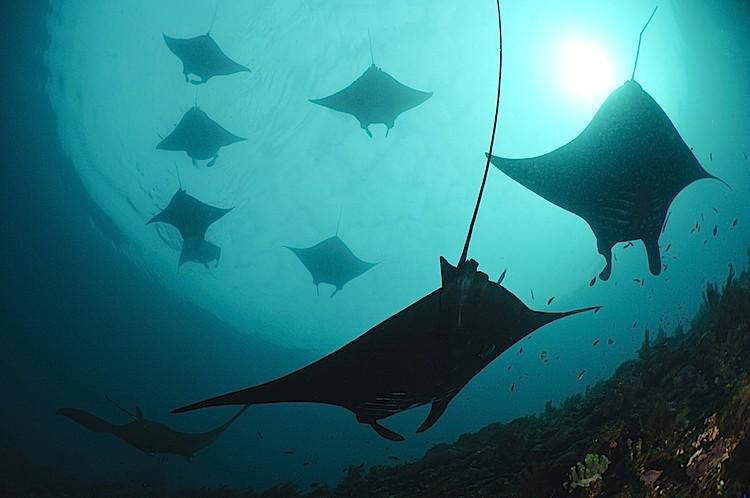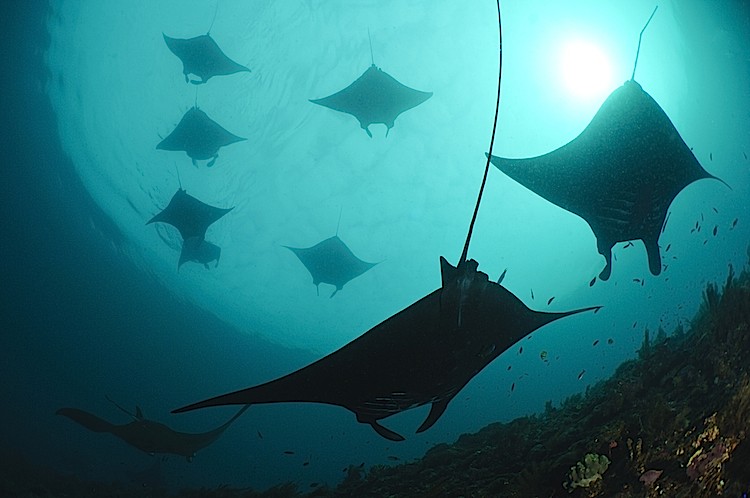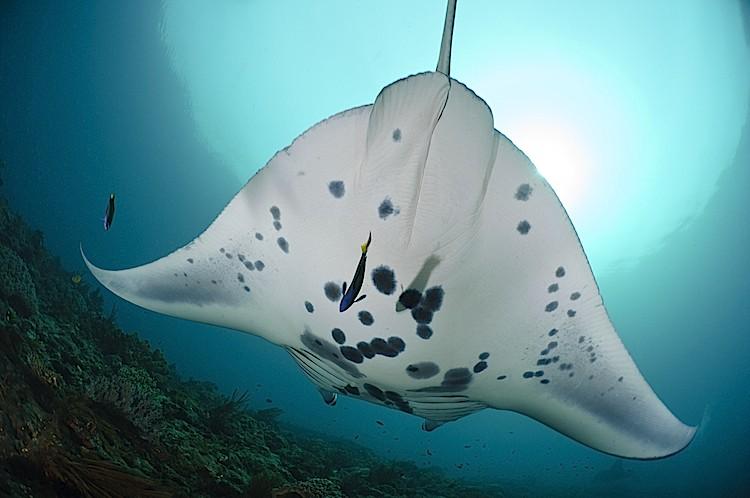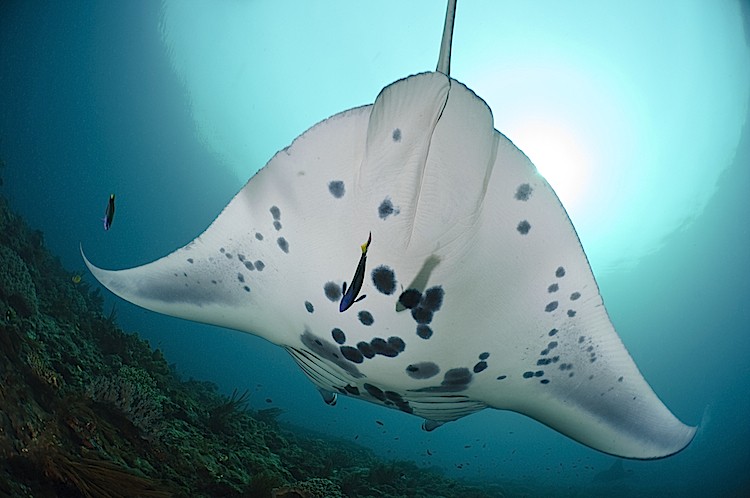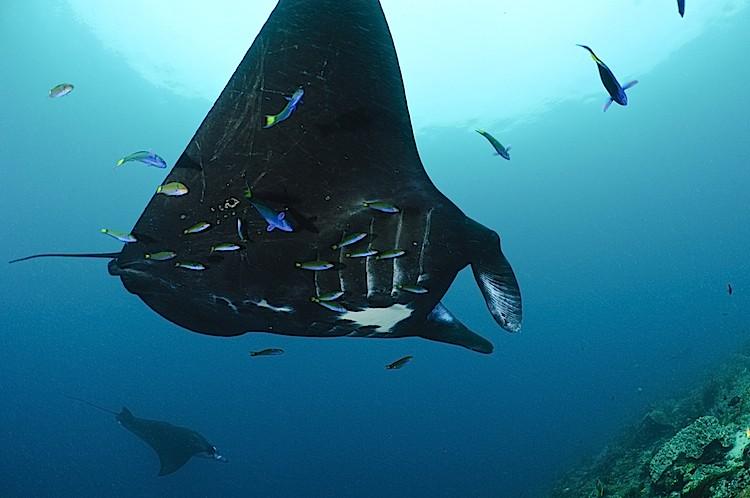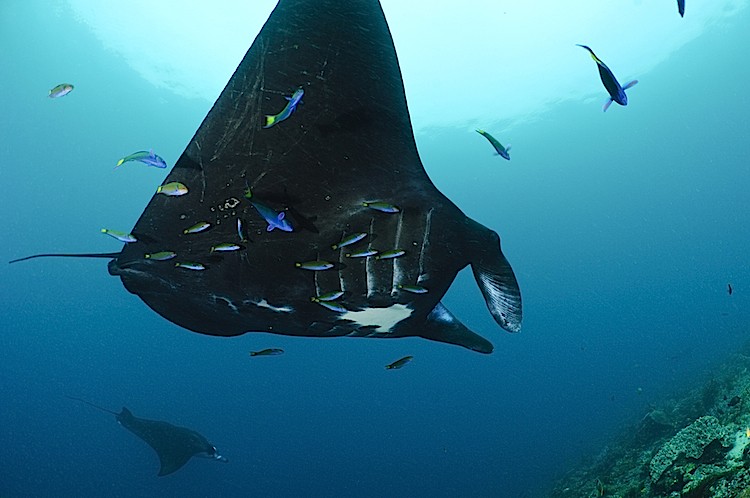On coral reefs, cleaning stations can often be seen. There certain species of fish and shrimp eat the parasites off other creatures in a mutually beneficial symbiotic relationship.
Parasites are removed both externally and internally, for example from the mouth and gills, and host-cleaner sessions can last from a few seconds to several hours.
An animal approaching a cleaning station signals to the cleaners by slowing down, opening its mouth, flaring its gills, and/or posturing its body.
Large animals like turtles and manta rays frequent cleaner stations, which are typically manned by cleaner wrasse, and sometimes other types of cleaners like gobies and cleaner shrimps.
A study in Australia documenting visits by manta rays and sharks to cleaning stations on the Great Barrier Reef revealed that the two types of animals behave very differently.
“The manta rays would cease all movement of their fins while in the cleaning stations,” James Cook University researcher Michael Kingsford told Discovery News. “Their gills were often flared and mouths open, but never wide enough to suggest feeding. Several cleaner fish would then migrate upwards towards the animal and begin cleaning.”
“Sharks in the vertical posture would typically approach with the tide before pointing head upward towards the surface upon reaching the cleaning station,” wrote the authors in the paper. “Pectoral fins pointed down, mouth open, gills flared and a rapid paddling of the caudal fin were typical behaviors.”
“Depending on the strength of the current, each interaction would last anywhere between 5 and 10 seconds before the client would move away from the station and the cleaners would immediately retreat to the reef,” they wrote. ”The shark clients- in most cases- would swim back around into the current and repeat the process until cleaning had ceased.
The study was published in Marine and Freshwater Research in January 2010.
Matthew Oldfield is a freelance photographer based in Bali, Indonesia, specializing in editorial and documentary images from both above, and below the waves. He works primarily with charities, NGO’s, and other organizations working to conserve the environment, endangered species, and disappearing cultures.
